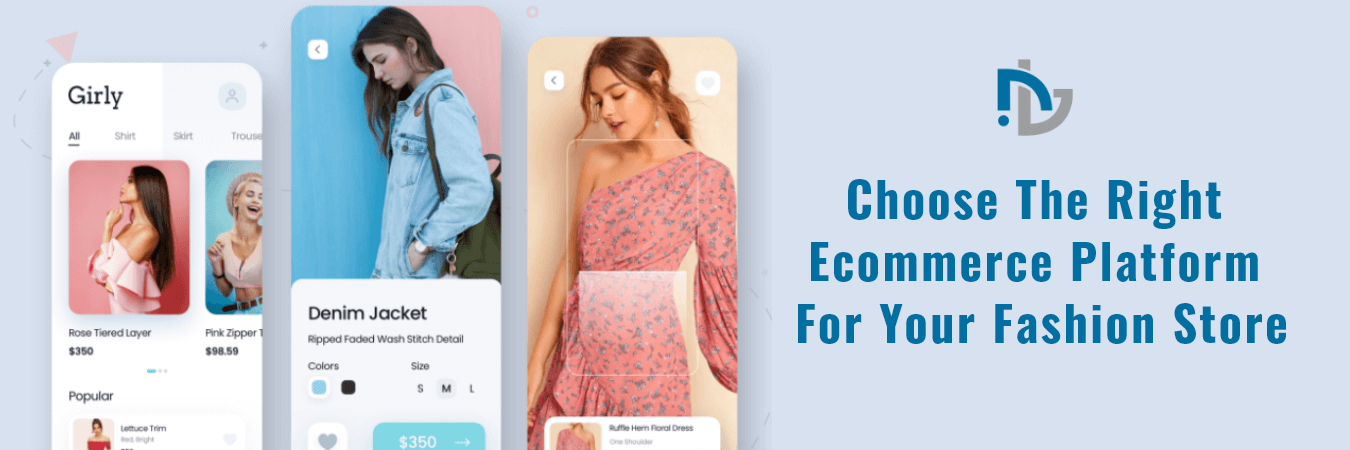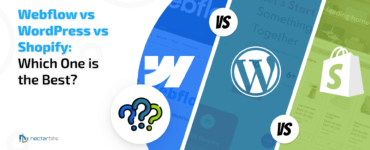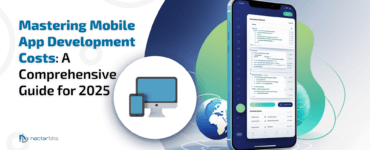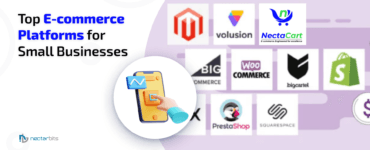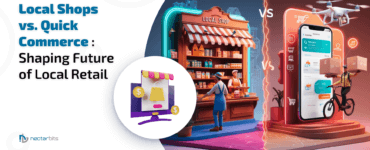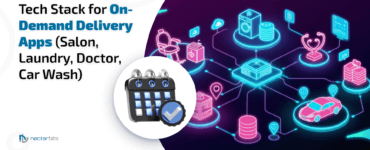Ecommerce Platform
The fashion industry is constantly evolving. As the season changes, people’s tastes transform, and new trends come and go, it weaves the risk into the fashion industry. What’s working today, may curse the fashion retailer the next day. The fashion style has become more unpredictable after pandemics hit the world.
The leading fashion retailers, including H&M, Levi’s, and Nike have experienced dips in revenue. It’s followed by digital innovation, changes in customers’ spending, overturned traditional loyalties, and shifting markets.

There are many factors, including global market expansion, increasing smartphone penetration, harnessing technology and social power, and active customers with disposable income, which are fueling the growth.
However, everything is not so rosy. Even before the corona outbreak, the fashion retailers struggled to maintain profits under the sustainability storm. It’s so because they succeeded in earning visitors and converting them, but failed at nurturing customer relationships. Let’s understand it in a nutshell.
When you buy clothes or apparel from an offline store, you check color, design, size, and other things. If a single is missing or a defect you found, you won’t purchase the item. The same thing customer expects when they browse and purchase online. Single friction in the buying journey, poor quality photos, slow checkout, or unclear return policies move your ‘future potential customer’ to the competitor’s store.
In the fierce competition, favoring the inexpensive approach to get build the eCommerce platform for fashion stores proves to be an expensive mistake. Unlike other eCommerce stores, the fashion store needs to offer something, that’s beyond the purchase. The online fashion store needs to appeal the aesthetically biased customers which create another layer of complexity.
Read more : How to Protect Your Store from Online Scammers
The fashion store needs to be very specific with an eCommerce platform selection that provides all the merchandising capabilities, facilitates CRM integrations, enables advanced shipping customization, secured payment gateway, robust backend, and a lot more. It’s fair enough.
The problem grows by manifolds when the store needs to pick one eCommerce platform from the plethora of choices such as Magento, WooCommerce, Wix, BigCommerce, Shopify, and others. Don’t fret! We have made the eCommerce platform selection a breeze.
Choosing the Right Ecommerce Platform for Your Fashion Store
When it comes to running a successful fashion store online, choosing the right ecommerce platform is crucial. With so many options available, it can be overwhelming to make a decision. However, by considering factors such as merchandising capabilities, CRM integration, shipping customization, and payment security, you can narrow down your choices.
It’s important to ensure that the platform you choose is scalable and customizable to accommodate your business growth. By providing outstanding customer experiences, seamless checkout processes, and reliable support, you can create a loyal customer base that will set you apart in the competitive fashion industry.
The things that your eCommerce platform should have
- Going beyond the typical personalization
The fashion store customers actively look for personalized experiences. The typical personalization things like- product recommendations, sending emails with customers’ names, or congratulating the customers on birthdays or anniversaries, are not enough to intrigue the customers. Hyper-personalization is vital.
The customers’ purchase history, buying preferences, and behavior are deeply analyzed to identify how to best deliver value to them. The personalization experience is taken to a new level by leveraging AI and machine learning technology. For instance, Netflix steps up personalization by customizing the program images based on users’ purchase behavior which has helped in increasing retention rates.
Read more : Technology Stack For On-Demand Appointment Booking App
Similarly, fashion stores can personalize storefronts by analyzing every individual’s onsite browsing behavior or purchase history. Also, the dynamic onsite content is delivered after the engagement history analysis.
- Harness social power to meet multi-channel demands
Social media channels and fashion stores are matches made in heaven as it helps in increasing brand exposure on multiple channels with consistent and product-centric content. The tech-savvy fashion retailers are including social commerce integration in their strategy uniquely. They first championed the brand presence and earned optimal engagement on one channel, and then proceed further.
For instance, Dorsal- the lifestyle accessories brand begins marketing on Facebook and later on Snapchat. After gaining success, they spent bundles on Google ads, worldwide advertising, and email marketing while spreading a consistent message to interlock and immerse the audience. Once they reached an optimal customer base, they made efforts in improving customer experience and expanding fashion business cross-borders. The experimentation with different social channels helped them to launch the fashion business on multiple channels.
- Security is all-important
In online fashion stores, the customers make high-value purchases, which demands payment security at first. The fashion stores need secure payment gateway integration that ensures transactions and transactional data are kept safe. The fashion stores hosting the website on a local server need to deal with installations, regular updates, and data security. On the other hand, cloud hosting takes care of the payment gateway and data security.
Additionally, the fashion store keeps a record of users’ data that requires continuous back-ups and data encryption in transit so that no one can put a dent in the website’s data firewall.
- SEO-based store creation
The high-performance and elegant UI-packed fashion store are of no value if it can’t be discovered by your target customers. The SEO improves the SERP of a fashion store and gets it displayed in front of the customers when they are searching for similar functionality. Do check if the eCommerce platform covers SEO capabilities that SEO-optimize the store functionalities. It helps in increasing traffic to the store alongside a higher ranking on Google.
- Great support when required
The omnichannel fills the void between offline and online fashion retail stores which helps in gaining a single view of the customers. However, customer loyalty has become a rare commodity in the online fashion space, that’s followed by poor relational experiences and customer support. The brands are coping with the challenge by providing immediate support to the customers through AI-bots integration, live chat, and others during, before, and after the purchase.
How can you be so sure that the Ecommerce platform meets your unique business needs?
- Ask questions and move ahead with a free trial
Before signing a contract with an eCommerce platform service provider, you should be ready with a list of questions that lets you make the right decision. Ask them whether it includes all the features that a fashion store needs, reliable hosting solution, incredible support, facilitate online marketplace integration, SEO-optimized, mobile-responsive, engineer outstanding experiences, customization facility, and more.
In the post-answer session, test the features that they claimed to work perfectly via a free trial.
- Don’t overlook cost comparison
Open-source eCommerce platforms are available that allow you to launch a fashion store. But basic functionalities won’t work in the long run. The advanced functionalities involve cutting-edge technology leverage, which comes at a cost. The hosting services, payment gateway integration, analytics integration, protection from DDoS attacks, check-out, and others increase the price accordingly.
Get the price quote of every eCommerce platform and then compare to select the platform that provides the best value for your business.
- UI/UX engineering stays at the heart
It’s a no-brainer to state the importance of designs in the fashion store. It’s visuals that appeal to users at first sight and make them buy from the store repetitively. Check the customizable themes they provide for free and paid for creating a big difference. Also, you can try top-class themes to preview how it works for your store. Checking the designs’ responsiveness is important to know if it performs to the notch on different screen types and sizes.
- Test how the store’s functionalities work
Without testing, you cannot be sure about that the features will work as promised or not. It’s best to test them to verify the performance. A few things you need to check, include easy setup, effortless SKU and product management, centralized channel management, a one-click app marketplace, and other things.
- Check the scalability and customizability factors
As your business grows, the online store needs extra support, including the addition of features, UI/UX re-engineering, an increase in server capacity to accommodate a large number of requests, and new technologies.
Wrapping it up
The online fashion industry is a big industry where emerging trends are shaping the future of the fashion world. What’s common in every trend is ‘Customers.’ Regardless of season change, style transformation, and lifestyle trends come and go, the buying journey must be simple to make the customers stay with your brand. Consider the following things while choosing the e-commerce platform to let your fashion business grow boundlessly.



